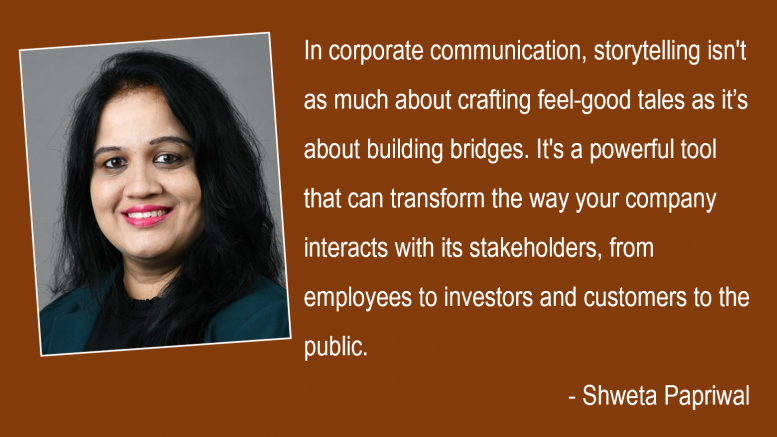Our brains are wired for stories when we want to communicate. And this is by default, not design. That’s why a school or a college reunion echoes with laughter, or someone who has the gift of telling engaging anecdotes becomes the life of any party. Whether in a personal setting or professional, conversations would be drab without stories. Tales can elevate any communication and take it beyond just information, facts, and figures. They are not just for winding down in the lunchroom but effectively engaging in the boardroom or through corporate communication.
Corporate communication often gets the bad rap for being too sterile or limited to dry press releases and jargon-filled memos. But as people look for an experience and a connection, its future belongs to powerful storytelling. We are in an age saturated with information, and facts alone don’t resonate. We crave narratives that ignite our imaginations, touch our emotions, and connect us to brands on a deeper level. So, the impact of storytelling becomes compelling.
In corporate communication, storytelling isn’t as much about crafting feel-good tales as it’s about building bridges. It’s a powerful tool that can transform the way your company interacts with its stakeholders, from employees to investors and customers to the public. Organisations can use it to engage employees and inspire them to see their work as part of a larger purpose. Besides, it also connects with customers and forges emotional bonds that go beyond product features and price tags. Stories can build trust in investors or create partnerships as they give a glimpse of the “why” behind the “what,” of your business, humanising the pragmatic corporate machinery. After all, people, not algorithms, make decisions.
Storytelling isn’t a privilege only of Fortune 500 giants. Everyone, from frontline workers to the CEO, has a story to tell, and everyone can benefit from hearing them. Stories can enhance productivity by creating a shared purpose and motivating employees to go the extra mile. They can encourage leadership by showcasing real-life examples of courage and innovation. They can even bridge the gap between investors and businesses, fostering trust and understanding.
Whether you’re a bootstrapped startup or a sprawling conglomerate, the power of storytelling levels the playing field. For a small startup, a compelling founding story can attract talent and investors. For a large corporation, weaving narratives of customer success can drive loyalty and brand advocacy. A small local bakery can weave a narrative of community and tradition, while a tech giant can use the hero’s journey to illustrate its innovative spirit. The size of your organisation doesn’t matter; the size of your impact does.
One may associate stories and storytelling more with the ‘creative’ world than the numbers-led business world, but the power of words is not discriminatory. Albeit emotional in nature, storytelling is a creative medium with remarkable adaptability. It’s the fabric of any field that seeks to connect with humans. Annual reports can be spun into tales of resilience and growth. Technical specifications can be transformed into chronicles of innovation. The key lies in finding the human element, the emotional thread that connects your audience to your message.
Storytelling is a creative medium with limitless applications. It’s a tool for the heart and the head and appeals as much to the doer as to the dreamer.
Storytelling is the future of success in the age of human-centric communication. Companies must look beyond the marketing noise. Finding stories in a company’s history, its people, or its impact on the world will yield surprising results. As the brand’s narrative unfolds, it can transform stakeholders from passive bystanders to enthusiastic participants in your remarkable journey.
In the digital age, where attention spans are fleeting, and content floods our screens, corporate communication faces a new frontier. By harnessing the power of human connection that stories offer, companies can cut through the digital chaos and build meaningful relationships with stakeholders. This is the era of empathy-driven communication, and storytelling is the key to unlocking its potential. Organisations can and must leverage weaving narratives that resonate with emotions, spark curiosity, and paint vivid pictures.
The views and opinions published here belong to the author and do not necessarily reflect the views and opinions of the publisher.



Be the first to comment on "Why Storytelling Is the Future of Corporate Communication?"